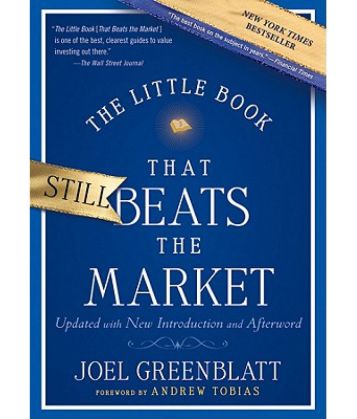September marks the return of the months with dividend income in excess of 100EUR.
I received the following dividends in September 2017:
- Unilever: 17.41EUR
- Hershey’s: 5.49EUR
- Royal Dutch Shell: 65.62EUR
- McDonald’s: 4.65EUR
- NVIDIA: 1.31EUR
- BHP 12.65EUR
- Gilead: 20.19EUR
In total that’s 127.32EUR in after-taxes dividend income for September 2017.
Dividend increases:
- McDonald’s: +7.4%
- Philip Morris: +2.9%
Nice increase from McDonald’s while the Philip Morris increase remains relatively tiny.
New buy
I initiated a position in United Technologies (UTX). This is a diversified industrial that makes aircraft engines, aerospace products, elevators and escalators, and climate control solutions.
The Little Book That Still Beats The Market – Joel Greenblatt
Earlier this month I finally finished reading Greenblatt’s magic formula book. I started reading it quite a while ago but put the book down as it didn’t really peak my interest. Perhaps a decent book for (younger) beginners who know absolutely nothing about investing but I don’t think it’s suitable for more experienced investors.
The book is geared towards young teens and primarily centers around how the stock market works and how you can beat the market by using Greenblatt’s magic formula. It’s short and cheesy, and feels too much like a promotional piece.
I didn’t enjoy this book and think you can probably learn more about magic formula investing by reading a couple of articles about this investing style. Wikipedia boils down the basics of the book’s magic formula in nine sentences:
Formula
- Establish a minimum market capitalization (usually greater than $50 million).
- Exclude utility and financial stocks.
- Exclude foreign companies (American Depositary Receipts).
- Determine company’s earnings yield = EBIT / enterprise value.
- Determine company’s return on capital = EBIT / (net fixed assets + working capital).
- Rank all companies above chosen market capitalization by highest earnings yield and highest return on capital (ranked as percentages).
- Invest in 20–30 highest ranked companies, accumulating 2–3 positions per month over a 12-month period.
- Re-balance portfolio once per year, selling losers one week before the year-mark and winners one week after the year mark.
- Continue over a long-term (5–10+ year) period.

Stocks for the Long Run – Jeremy Siegel
Another book I finally finished reading! This is another of the investing book classics, it was originally published in 1994 but the book has received several revisions over the years so it doesn’t feel dated.
This is a book I definitely recommend to beginners, it gives you perspective about the history of the stock market and what kind of returns you can expect in the long run. Data from this book is commonly cited and the book is full of interesting nuggets.
Don’t expect to learn any ground-breaking investment strategies or anything like that, the main message here is that stocks are something for the long run. This is basically the “buy and hold” bible and it can help a lot when you’re nervous about getting your feet wet in the stock market.

How was your month? Lots of dividend income or some exciting new purchases?

